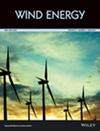Norwegian offshore wind power—Spatial planning using multi‐criteria decision analysis
IF 3.3
3区 工程技术
Q3 ENERGY & FUELS
引用次数: 0
Abstract
Abstract The Norwegian government recently agreed on the goal 30by40 , which involves opening Norwegian offshore areas to host 30 GW of installed wind power by 2040. We address this goal by presenting a first mapping of wind power suitability scores (WPSS) for the entire Norwegian economic zone (NEZ) using a multi‐criteria decision analysis framework (MCDA), namely, the analytical hierarchical process (AHP) approach. We obtain WPSS considering relevant criteria like wind resources, techno‐economic aspects, social acceptance, environmental considerations, and met‐ocean constraints such as wind and wave conditions. The results starts with a baseline scenario, where the criterion importance is pairwise compared in the context of balancing economic incentives and conflicting interests. Additionally, to reveal regions that are robust to changes in criterion importance, we carry out a sensitivity analysis by introducing three additional scenarios. These scenarios represent stereotypical actors with distinct preferences for siting of wind farms: the investor , the environmentalist , and the fisherman . The results show that the southern part of the NEZ is the most suitable and robust region for offshore wind power deployment. This region receives the highest suitability category (“very high” suitability for wind power application) throughout all the scenarios. Areas in the Norwegian part of the Barents Sea and the near‐coastal areas outside mid‐Norway are also well suited regions, but these are more sensitive to the choice of criterion importance. The use of AHP within the framework of MCDA is shown to be a promising tool for pinpointing the best Norwegian offshore areas for wind power application.挪威海上风电—基于多准则决策分析的空间规划
挪威政府最近就“30by40”目标达成一致,该目标涉及到2040年开放挪威近海地区,以容纳30吉瓦的风力发电装机容量。我们通过使用多标准决策分析框架(MCDA),即分析层次过程(AHP)方法,为整个挪威经济区(NEZ)提供风电适宜性评分(WPSS)的首次映射来实现这一目标。我们在获得WPSS时考虑了相关标准,如风能资源、技术经济方面、社会接受度、环境考虑以及风和波浪条件等海洋约束。结果从一个基线情景开始,在平衡经济激励和利益冲突的背景下,对标准的重要性进行两两比较。此外,为了揭示对标准重要性变化具有鲁棒性的区域,我们通过引入三个额外的场景进行了敏感性分析。这些场景代表了对风电场选址有不同偏好的典型参与者:投资者、环保主义者和渔民。结果表明,NEZ南部是海上风电部署最适宜和最稳健的区域。该地区在所有场景中都获得了最高的适合性类别(“非常高”适合风力发电应用)。巴伦支海挪威部分地区和挪威中部以外的近沿海地区也非常适合,但这些地区对标准重要性的选择更为敏感。在MCDA框架内使用AHP被证明是一种有前途的工具,可以确定挪威海上风电的最佳应用区域。
本文章由计算机程序翻译,如有差异,请以英文原文为准。
求助全文
约1分钟内获得全文
求助全文
来源期刊

Wind Energy
工程技术-工程:机械
CiteScore
9.60
自引率
7.30%
发文量
0
审稿时长
6 months
期刊介绍:
Wind Energy offers a major forum for the reporting of advances in this rapidly developing technology with the goal of realising the world-wide potential to harness clean energy from land-based and offshore wind. The journal aims to reach all those with an interest in this field from academic research, industrial development through to applications, including individual wind turbines and components, wind farms and integration of wind power plants. Contributions across the spectrum of scientific and engineering disciplines concerned with the advancement of wind power capture, conversion, integration and utilisation technologies are essential features of the journal.
 求助内容:
求助内容: 应助结果提醒方式:
应助结果提醒方式:


